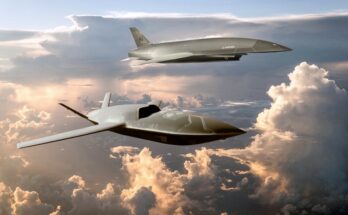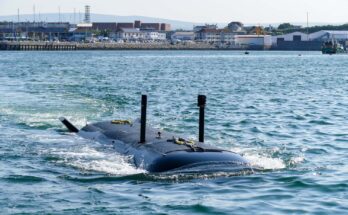
Interest in undersea warfare is experiencing a resurgence following years of neglect in favor of airborne and land-based operations. This revival is being driven by China’s increasing aggression in the South China Sea around the Spratly Islands; Russia’s quiet increase in its Arctic fleet to take advantage of the new sea lanes that are opening up as a result of climate change, allowing previously inaccessible natural resources to be exploited; and aggressive rants coming out of North Korea.
Additionally, many nations have been upgrading their submarines by procuring readily available commercial technology and adapting it to military use. This practice has allowed less industrialized nations to “level up” their fleet where they otherwise didn’t have the technology or industrial base to do so. The threats to surface combatants have therefore increased, forcing a focused effort to identify the most promising ASW technologies through a process of discovery, assessment, experimentation, and analysis. Whether these systems are shore-based long-range maritime patrol aircraft or ship-based short-range helicopters, aircraft form the primary means of defense against a submarine attack and are the key weapon in an offensive against enemy submarine forces. Such systems, therefore, offer an ASW operator a synergistic range of capabilities and tactical options. Maritime patrol aircraft inherently face a number of difficulties in tracking submarines.
Two of the prevailing problems are determining whether a submarine is present in a given search area and localizing that submarine with sufficient accuracy to permit an attack. Once these two challenges have been met, the submarine in question is in serious danger and must fight hard to survive. That being said, the initial problem of simply finding out whether a submarine is present or not remains hard to solve and is becoming more challenging in the face of the increased technical standards of modern diesel-electric submarines. The challenge of determining whether a submarine is in a given search area (or, more precisely, determining where aircraft should hunt for a submarine) remains difficult to overcome. In fact, without some form of external assistance, the problem is almost insoluble.
A major portion of the world’s maritime trouble spots can be found in coastal/green water. In the harsh conditions of coastal/green water, low-frequency sonars lack the precision and definition required for adequate ASW operations. Sonars in the medium-frequency bands are more suited for green water ASW. It is in this environment that airborne platforms feature the mobility required to quickly counter developing threats and exploit fleeting contacts, as they are equipped with sensors that enable them to reacquire and prosecute contacts. They also have the ability to carry a range of weapons that have a reasonable capability against most types of submarines. Even better from an aircraft crew’s point of view, the submarines the crew is hunting cannot shoot back, at least not at the present time.
Forecast International’s Anti-Submarine Warfare Forecast covers the technologies being developed and produced to counter the submarine threat. This service contains reports on leading programs such as the DICASS sonobuoy, the Mk 48 ADCAP torpedo, the NAUTIS family of C2 systems, the Enhanced Polar System (EPS), and Surface Ship Torpedo Defense (SSTD) weapons. Also featured are promising developments such as air-independent propulsion for diesel-electric submarines, new silencing techniques, and the widespread introduction of unmanned underwater vehicles that could assume some of the hazardous duties now performed by manned submarines. An annual subscription includes 70+ individual reports, each with a 10-year unit production forecast. Click here to learn more.
For more than 30 years, Richard has performed numerous roles as a top analyst for Forecast International. Currently, Richard is the Group Leader and Lead Analyst for Forecast International's Traditional Defense Systems, which covers all aspects of naval warfare, military vehicles, ordnance and munitions, missiles, and unmanned vehicles.
Having previously been Forecast International's Electronics Group Leader for 20-plus years, Richard established Electro-Optical Systems Forecast, as well as having been the prime editor of Electronic Systems Forecast, Land & Sea-Based Electronics Forecast, and C4I Forecast. Additionally, Richard has served as the Naval Systems Group Leader responsible for Anti-Submarine Warfare Forecast andWarships Forecast.




